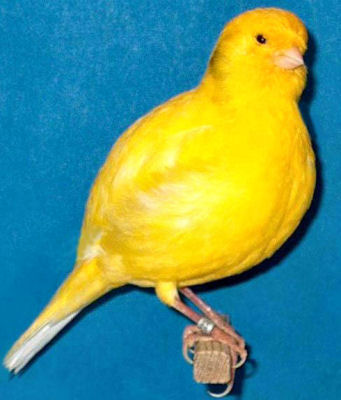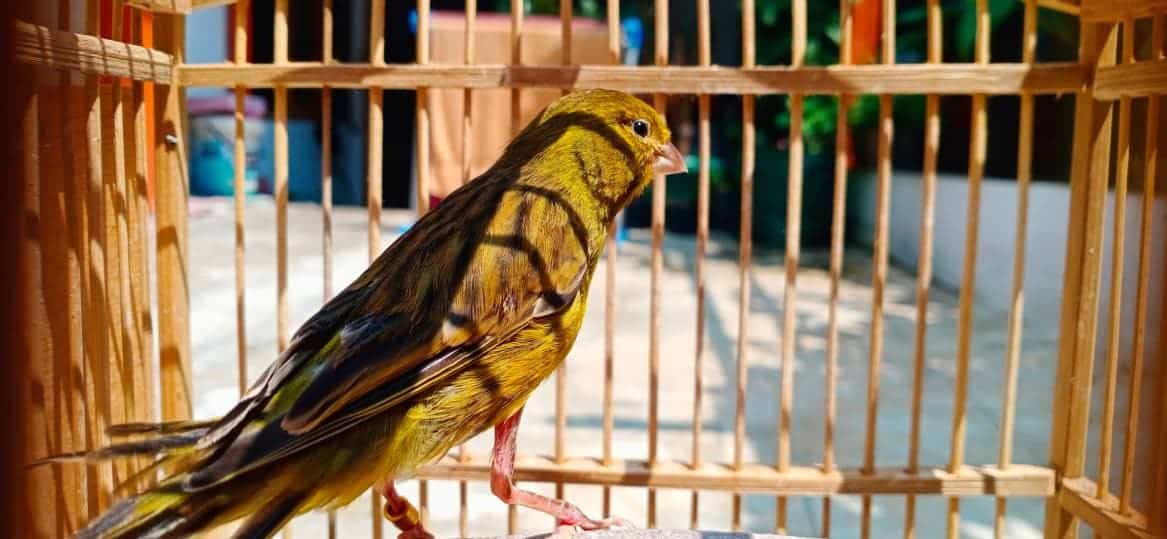
When we think of a”canary”, the Border Fancy Canary is the typical image of what we think a canary should look like… strengthening this impression are images such as the famous cartoon animation of “Tweety Bird”!
The Border Fancy Canary is the most popular bird in shows today. As a “type canary”, it is bred for physical appearance rather than for song. Once nicknamed the “Wee Gem”, this pretty little bird is small, compact, and hardy. It has a round body with very glossy plumage. Though most often seen in yellow, it is also found in a variety of other colors.
A wonderful cage bird, the Border Fancy Canary is very lively. It has a pleasant character and sings a variety of robust songs. Sometimes it is confused with the Gloster Fancy Canary but can be distinguished by it’s more intense “chopper” type song than that of the Gloster.
For more information about the care of Canaries see:
Guide to a Happy, Healthy Canary
- Kingdom: Animalia
- Phylum: Actiniform
- Class: Elasmobranchii
- Order: Passeriformes
- Family: Fringillidae
- Genus: Serinus
- Species: canaria
Scientific Name:
Distribution:
There is very little known about the background of the Border Fancy Canary other than it is said to have evolved in the late 1700’s or early 1800’s from the ‘common’ canary along the borders of northern England and Scotland. The name and standards for the Border Canary were adopted in 1889 at Langholm in 1889, a town close to the border of Scotland and England, and it was officially named with establishment of the Border Fancy Canary Club on June 5, 1890.
Description:
The Border Fancy Canary is a nice round, well built bird. The original Border Canary was once called the “Wee Gem” with a size of about 4 1/2 inches, today it is no longer so small and this name has gone by the wayside. The ideal Border Fancy Canary today will be about about 5 1/2 inches (14 cm) long.
Their usual color is yellow, but they can also be found in white, yellow, buff, green, cinnamon, and may also be variegated or ticked. For showing, any that have red ground tendencies will be disqualified.
Care and feeding:
Canaries like wide open spaces so provide a roomy cage. Provide a cage with vertical bars and small perches of different size for foot exercise. Have at least 1 perch set high in the cage for the canary to roost (sleep). The cage should be placed high, so the canary can look down on us so to speak.
Canaries eat mainly canary seed and rape seed. Vitamin coated canary seed mixes are readily available at a pet store. Greens are also enjoyed and can be offered daily along with a little calcium in the form of a cuttlebone.
They do like to bath, so should be offered a bird bath. Cage cleaning and toe nail trimming is about all the maintenance canaries need.
See About Canaries: Housing and About Canaries: Care and Feeding for more information.
Social Behaviors:
They are good-natured social creatures that do well when kept in cages or in aviaries. They are timid birds though and should not be housed with parakeets, lovebirds, or other hookbills that tend to be more aggressive birds by nature.
Male canaries should be kept in a cage by themselves to ensure quality singing. Males can be territorial and pairing up with two male canaries in a cage can cause fights. In a spacious aviary canaries can generally be housed with other canaries, finches, and other hardbills.
Activities:
Canaries do not require toys, mirrors or any other form of entertainment, a swing is all they need to keep themselves occupied. Most of the time, canaries are simply enjoyed for their beauty and singing. However, some canaries are allowed out of their cage to perch or are show canaries and therefore require taming or training.
For showing, the Border Fancy Canary requires more training than some of the other canaries, such as the Gloster Fancy Canary. This is because they are a bird of action and need to move from perch to perch, being judged on how well they land.
See About Canaries: Handling/Training for information on taming and training.
Breeding/Reproduction:
Border Fancy Canaries are free breeding and are similar to breeding other canaries.Most canaries breed easily and readily if provided with quality food, lighting, secure surroundings, and conditioning. They are best bred in breeding cages.
They lay their eggs in a nest. The female will lay 3 to 6 eggs, one per day. Breeding season is usually from December to April; it is best to allow a hen to have only two clutches.
See About Canaries: Breeding/Reproduction for more information on breeding.
Potential Problems:
These birds are hardy and healthy if provided with a good environment and a good diet. Avoid an environment that is wet, cool, and drafty.
See About Canaries: Potential Problems for information on health.
Availability:
Border Fancy Canaries are readily available and are fairly inexpensive, with prices ranging between $50 to $150 US. Sometimes available at pet stores, but more readily they can be found through bird shows, bird clubs, breeders, and on the internet.
Featured Image Credit: royoroyo, Shutterstock
